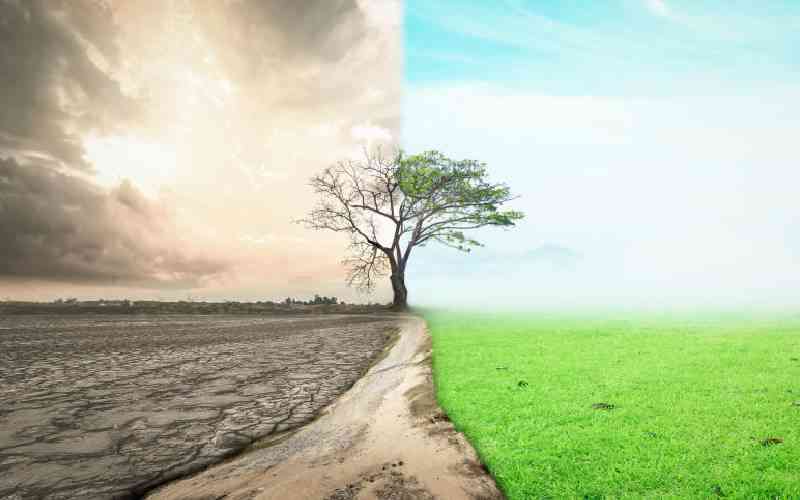Shaukat A Abdulrazak
About 80 per cent of Kenya’s land area is classified as arid or semi arid, presenting a challenge in supporting agricultural activity. Climate change has also drastically affected water systems.
A change in rainfall patterns has led to food shortages affect an estimated ten million people. The intense storms experienced when rain finally comes lead to floods and surface runoffs, resulting in erosion of topsoil. Loss of soil fertility has then driven farmers to engage in massive destruction of forests, woodlands and other catchment’s areas. Rather than allowing rainwater to cause environmental damage — landslides, floods and soil erosion — it can be harnessed for use in households, agriculture and industry.
Rainwater harvesting is the gathering or accumulation and storage of rainwater for future use. Extensive harvesting existed 4,000 years ago in the Palestine and Greece. As early as the third millennium BC, communities in Baluchistan (now part of India) impounded rainwater and used it for irrigation dams. In most industrialised countries, harvesting systems have been developed to reduce water bills or water crops. Appropriate technology provide low-cost disinfection options.
In Uganda and Sri Lanka, rainwater is collected from trees, using banana leaves or stems as temporary gutters. Up to 50 gallons may be collected from a large tree in a single rainstorm. Many other countries use sophisticated filtration and catchment tanks. Harvesting rainwater is growing in usage due to diminishing resources and growing populations.
Traditionally, rainwater harvesting has been practiced in arid and semi-arid areas. In congested, over-paved metropolitan cities, we need to create methods to capture rainwater as surface water is inadequate to meet demand. Due to rapid urbanisation, infiltration of rainwater into the sub-soil has decreased drastically and recharging of ground water has diminished. With limited water on the one hand and increasing demand on the other, there is a growing awareness to collect rainfall and make more efficient use of it.
The two main techniques are surface storage and recharge to ground water. The former, a traditional technique, uses tanks, dams, weirs and so on. Recharge is a rather new concept using pits, trenches, dug wells, hand pumps, recharge wells and recharge shafts. Technology for harvesting is available locally at low cost and is easy to use. It has the potential to improve living standards for millions.
Implementing the techniques directly benefits our country by reducing demand on the water supply, and reducing run-off, erosion and contamination of surface water.
Prof Abdulrazak is the Executive Secretary of the National Council for Science and Technology.
 The Standard Group Plc is a
multi-media organization with investments in media platforms spanning newspaper
print operations, television, radio broadcasting, digital and online services. The
Standard Group is recognized as a leading multi-media house in Kenya with a key
influence in matters of national and international interest.
The Standard Group Plc is a
multi-media organization with investments in media platforms spanning newspaper
print operations, television, radio broadcasting, digital and online services. The
Standard Group is recognized as a leading multi-media house in Kenya with a key
influence in matters of national and international interest.
 The Standard Group Plc is a
multi-media organization with investments in media platforms spanning newspaper
print operations, television, radio broadcasting, digital and online services. The
Standard Group is recognized as a leading multi-media house in Kenya with a key
influence in matters of national and international interest.
The Standard Group Plc is a
multi-media organization with investments in media platforms spanning newspaper
print operations, television, radio broadcasting, digital and online services. The
Standard Group is recognized as a leading multi-media house in Kenya with a key
influence in matters of national and international interest.








